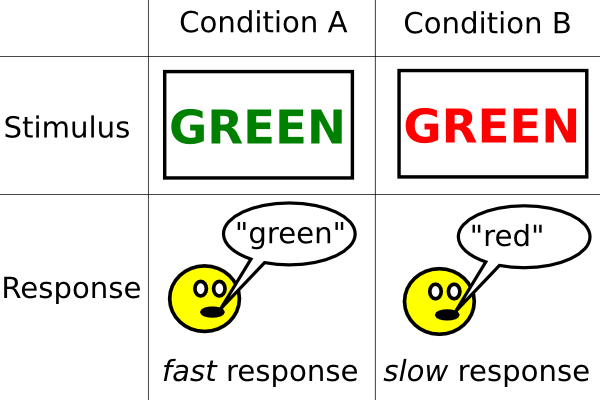Is multitasking a strength or a weakness you need to find or rule out in candidates? On the one hand, dividing one’s attention into two or more simultaneous tasks can lead to severe consequences. They did not enforce the “no speaking on the phone while driving” rule for nothing. On the other hand, no employee has the luxury of staying focused on only one singular task throughout the workday. We all multitask at various levels, one way or another. At this point, the question becomes, “is the ability to multitask relevant in the recruiting process?” And if so, how do recruiters perform multitasking testing? Is there a standardized multitasking test to apply and score? Can people multitask well? We will answer all these questions and more in the guide below!
What Is Multitasking?
A person who shows a visible multitasking ability is one who can complete correctly two or more tasks at the same time. Many of us are proud that we can speak on the phone while reading an email, hold a conversation with a colleague, all the while listening to music.
Is it multitasking? According to the broad definition, it is. Can you use a multitasking test to prove a candidate can do all those things and more with accuracy? Well, things might get a bit complicated in this regard.
The Ability to Multitask: Myths and Truths
Recent research in psychology and neurosciences show that our brains are not actually capable of multitasking. If you wonder whether people can multitask well, the scientific answer is “no.”
Our brains do not perform simultaneous tasks but switch rapidly among these tasks. The problem with these fast switches from typing to phone speaking is that they waste our time and brainpower. In other words, multitaskers are prone to finishing their tasks with difficulty and at higher levels of inaccuracy.
Another myth about multitasking is that the people who seem to juggle well with various activities simultaneously give the impression that they are “smarter” and more capable than others. In truth, neuroscience shows us that individuals who multitask more often than not perform poorly in cognitive tests. It happens because they are more vulnerable to the interferences caused by irrelevant stimuli in their working environment.
Therefore, if multitasking is a myth, why do we apply multitasking tests in the recruiting process?
A Multitasking Test Can Be a Job Performance Predictor

With technology taking over every aspect of our jobs, no recruiter or company can ignore the multitasking ability in our modern times. Various job descriptions and candidate profiles make it clear that employers want individuals who can converse with clients, enter data in forms, actively listen, and perform research simultaneously.
Multitasking testing is a relatively new field of study in psychology. However, there is research showing that multitasking is a predictor of job performance in call center agencies.
And this is not exclusive to customer service representatives. Some professionals need to multitask to make it through the day, from registered nurses, postal workers, receptionists, and television producers to project managers and advertisers.
The jobs that require intense concentration and juggling multiple tasks – including constant interactions with others – are particularly challenging. Employers praise employees who can demonstrate the ability to multitask without diminished performance. In other words, some people must multitask in their positions but manage the workload and achieve work quality.
We Could Predict Multitasking by Assessing Personality and Mental Abilities
According to psychologists, multitasking is both an ability and a personality trait. Experts talk about monochromic vs. polychromic individuals. Each category shows different capabilities when it comes to multitasking. As you can quickly figure out, polychromic individuals are the ones who can multitask successfully.
Monochronic individuals perform tasks simultaneously, are more schedule-driven, engage in more detailed planning, are task-oriented, and pay close attention to promptness. On the other hand, polychronic individuals prefer to approach tasks simultaneously, are more likely to change plans, tend to be less organized and aware of time, more likely to report that they have completed daily goals, and feel less stress under time pressure. Polychronic time use has been negatively related to role overload and positively associated with education, hours worked, and the number of social activities in which a person is involved was the first to formally suggest that polychronicity should be considered within the context of selection and placement of employees.
Cober, Richard & Cober, Alana & O’Connell, Matthew. (2003). Predictors of multitasking ability for selection: Attitudes versus ability.
In this light, the exciting challenge here is as follows: how do you demonstrate the ability to multitask in a candidate?
Abilities – Personality – Behavior – Multitasking: What is the Correlation?
If we consider the research mentioned above, we can measure multitasking skills by getting in-depth insights into a candidate’s personality and abilities. Let’s summarize the conclusions of the study above (although more research on this matter is mandatory):
- An individual’s polychronic preference correlates positively with that individual’s performance in a simulated multitasking situation designed to assess polychronicity. In other words, if a person shows an appreciation for multitasking, that person most likely performs well on a multitasking test.
- An employee’s performance in a simulated multitasking situation is a better predictor of actual job performance than the measured preference for polychronic behavior. It means that some people might show an inclination for multitasking but not be good at multitasking in an actual job situation. Recruiters should make predictions based more on abilities than personality inventories.
- The use of multitasking testing (polychronic ability) in personnel selection can help recruiters and companies find employees who have multitasking skills that go beyond cognitive skills.
This study’s limitation is that it focused on employees working in manufacturing. However, according to the authors, extrapolations are possible:
Our results indicate that organizations selecting individuals for jobs that require multitasking behavior would likely benefit from utilizing simulations that assess polychronic ability (the ability to multitask) as a screening device. Using computer-based assessments to pre-screen job applicants allows organizations a more sophisticated means of filtering candidates who do not fit with job requirements. The challenge presented to HR Departments is selecting screening measures that provide the most useful filter of applicants.
Cober, Richard & Cober, Alana & O’Connell, Matthew. (2003). Predictors of multitasking ability for selection: Attitudes versus ability.
How to Test the Multitasking Ability in Current Pre-Employment Practice

As you can see, psychology and human resources do not yet have standardized multitasking tests to cover all possible job profiles. Nevertheless, recruiters can use the existing inventories and batteries to gain insight into candidates’ polychronic preferences. After all, we have developed a hefty sum of ability tests that can predict multitasking performance, cognitive examinations, behavioral interviews, and so on.
So, how do we prepare for a multitasking test? Here are some steps you need to consider!
1. Know the Job Profile Well
Just as the study above suggested, you cannot apply a multitasking test blindly to any candidates. Before anything else, you should pinpoint the following aspects:
- What number of tasks does the employee have to juggle within the respective position;
- What is the combination of multiple tasks the employee has to juggle: digital and physical, verbal communication and data entry, numerical reasoning and problem-solving, etc.;
- Does the candidate have to be able to avoid distractions while working or manage multiple distractions simultaneously?
Once you have straight answers to these questions, you can create a candidate profile. The better you know the job role, the more effective your multitasking test will be.
2. Determine the Type of the Multitasking Test You Will Use
The research we referenced above clearly concludes that you cannot use a single test (be it a personality inventory, a cognitive test, or an ability test) to evaluate multitasking or predict job performance. In other words, you need to tailor your testing battery, which should obligatory include a multitasking simulation.
Remember that you have to customize your multitasking test to the job’s actual responsibilities in question and the candidate’s potential for growth!
Now that we got this out of the way, let’s talk about concrete tools and instruments you can employ to gain better insight into a candidate’s preference and ability to multitask.
1. The Inventory of Polychronic Values (IPV)
This 10-item inventory aims to measure the extent to which individuals in an organization/culture prefer to engage in two or more simultaneous tasks and believe that this preference is the best way to accomplish work goals. As Cober’s study revealed, recruiters can use this inventory to screen candidates for the following stages of the pre-employment assessment. Those who display a preference for polychronic behavior are likely to perform well in simulations.
2. A Multitasking Test Simulation
The best way to assess the ability to perform multiple tasks at the same time, according to Cober’s study, is a multitasking simulation. In clinical practice, multitasking tests aim to measure individuals’ ability to manage conflictual information, avoid distractions, etc. Nevertheless, clinicians use such standardized tests to assess brain functions in individuals with traumatic brain injury, autism, Down syndrome, etc.
In recruiting, you do not want to test for adaptability in brain-injured patients. It would help if you focused on the following aspects:
- The ability to switch between tasks frequently;
- The time required to switch between tasks;
- The quality of the tasks’ results when the candidate switched between them frequently.
If you don’t have access to a multitasking test, you can create one in your HR department or the company’s headquarters. Start with what you need your candidate to do best and create real-life simulations.
Multitasking Examples – What Employers Want

Here are some multitasking examples commonly found in almost all work settings that you should tap into while assessing the candidates:
- Talk over the phone while greeting visitors in a busy reception;
- Answer an urgent business email while speaking on the phone with a client;
- Work on three similar projects (website design, for instance) that are at various completion stages;
- Manage three or four five meal orders simultaneously;
- Work with sensitive data while answering text messages/chatbot;
- Review financial data while talking to a colleague.
These are just a couple of examples so that you can do a lot better. Of course, as we discussed in length in our guide on ability testing, standardized computer tests are the go-to solution. They offer you immediate, effortless scoring.
One instrument to use is the Stroop Test, a standardized multitasking test that assesses a person’s selective attention skills and processing speed. Alongside other tests, you can get a good measure of a candidate’s overall executive functions capabilities. Keep in mind that experts use it in clinical settings when they evaluate individuals with ADHD and traumatic brain injury.
Placing a candidate in a work simulation takes time, effort, and resources. Not to mention the results are vulnerable to subjective interpretation. However, if you find candidates who manage such simulations well, you can go further with the testing.
3. Ability Testing
If you need employees who can crunch numbers while having a phone or direct conversations with other people, you might want to test for numerical reasoning and verbal reasoning. When you choose ability tests, make sure the abilities match the job description and the candidate profile.
4. Cognitive Tests
If you read Cober’s study, you will learn that the propensity towards polychronicity and proven multitasking abilities have plenty to do with individuals’ intelligence fluidity and sharp cognitive skills. We don’t have to tell you why cognitive tests are the surefire way towards hiring talent. We have to say to you that a mix of cognitive assessments, personality inventories, and interviews always works better than either of them taken individually.
5. Personality Inventories
Matching a job description with a candidate’s profile, personality assessment, cognitive testing results, mental ability tests’ outcomes, and more is an art and a science. We already know that personality can be a predictor of job performance. All recruiters know that the best way to assess a candidate searching for those elusive employability skills is to go in-depth and evaluate applicants on all relevant dimensions.
It means that you are looking for candidates with positive scores on the Big Five conscientiousness dimension, which correlates positively with skills most companies hire for these days.
Look for an extended behavioral/personality assessment battery for candidate screening and choose the tests/inventories you believe will lead you to the superhero multitasker you want to hire.
6. Behavioral/Situational Interviews
When you consider multitasking interview questions, you know they are behavioral/situational. Here are some question ideas:
How did you handle a situation in which you had several various tasks to complete at the same time?
You are working on your project when a sudden email arrives from the manager, requiring you to do something completely different. It is urgent and time-consuming, but you cannot leave your work unfinished either. What do you do?
Here is a work situation: a customer asks for immediate attention over the phone while a colleague demands the same time and attention from you to solve a company problem. How do you handle things?
You are in your lunch break and you really need to eat but you also have to read a document and send it back to a different department with your notes. What do you do?
You are working from home. While completing your job tasks for the day, you need to attend to other household issues. How do you proceed?
Let’s say a situational interview gives you a better idea of a candidate’s preference for multitasking. It doesn’t mean the candidate will perform well in a multitasking situation. For this reason, you need to mix in multitasking simulations, cognitive assessments, and ability testing. Prioritization, time management, problem-solving, critical thinking, adaptability, etc., are the fertile grounds for growing multitasking abilities.
Bottom Line
On the internet, you will find plenty of brain teasers and tests assessing multitasking. You will also find a “supertasker” test that handpicks the veritable superheroes at multitasking. They are not many. However, you recruit people who have skills and abilities and the motivation to strengthen them while developing others.
A multitasking test is a complex type of assessment and a subjective one to boot. Nevertheless, it is crucial to perform a basic multitasking assessment, as it is a skill that most companies want, need, and pay for generously. Now, more than ever, employers need multitaskers, because working from home is the new reality and we all have to adapt to it.
Have you ever used multitasking testing in your recruitment process? How about creating a multitasking simulation to evaluate candidates? Do you think it is worth developing a multitasking test for your recruiting agency? We’d love to hear your professional position on this exciting topic!
References
1. Bluedorn, A. C., Kalliath, T. J., Strube, M. J., & Martin, G. D. (1999). Polychronicity and the Inventory of Polychronic Values (IPV): The development of an instrument to measure a fundamental dimension of organizational culture. Journal of Managerial Psychology, 14(3-4), 205–230. https://doi.org/10.1108/02683949910263747.
2. Cober, Richard & Cober, Alana & O’Connell, Matthew. (2003). Predictors of multitasking ability for selection: Attitudes versus ability. Conference: Society for Industrial and Organizational Psychology.
3. Van der Horst, Anna C. and Klehe, Ute‐Christine and van Leeuwen, Liesbeth, Doing it All at Once: Multitasking as a Predictor of Call Center Agents’ Performance and Performance‐Based Dismissal (December 2012). International Journal of Selection and Assessment, Vol. 20, Issue 4, pp. 434-441, 2012. http://dx.doi.org/10.1111/ijsa.12006.


